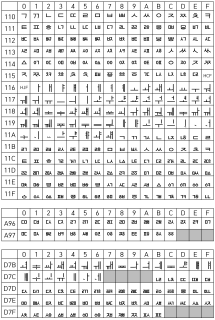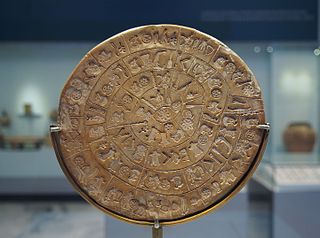 W
WIn typography, a dingbat is an ornament, a glyph or spacer used in typesetting, often employed to create box frames or as a dinkus.
 W
WDogra is a Unicode block containing characters of the Dogri script originally used for writing the Dogri language in Jammu and Kashmir in the northern part of the Indian subcontinent. The Takri script version of Jammu is known as Dogra Akkhar
 W
WHangul Compatibility Jamo is a Unicode block containing Hangul characters for compatibility with the South Korean national standard KS X 1001. Its block name in Unicode 1.0 was Hangul Elements.
 W
WHangul Jamo is a Unicode block containing positional forms of the Hangul consonant and vowel clusters. They can be used to dynamically compose syllables that are not available as precomposed Hangul syllables in Unicode, specifically syllables that are not used in standard modern Korean.
 W
WHangul Jamo Extended-A is a Unicode block containing choseong forms of archaic Hangul consonant clusters. They can be used to dynamically compose syllables that are not available as precomposed Hangul syllables in Unicode, specifically syllables that are not used in standard modern Korean.
 W
WHangul Jamo Extended-B is a Unicode block containing positional forms of archaic Hangul vowel and consonant clusters. They can be used to dynamically compose syllables that are not available as precomposed Hangul syllables in Unicode, specifically syllables that are not used in standard modern Korean.
 W
WImperial Aramaic is a linguistic term, coined by modern scholars in order to designate a specific historical variety of Aramaic language. The term is polysemic, with two distinctive meanings, wider (sociolinguistic) and narrower (dialectological). Some scholars are using the term as designation for a distinctive, socially prominent phase in the history of Aramaic language, that lasted from the middle of the 8th century BCE to the end of the 4th century BCE, and was marked by the use of Aramaic as a language of public life and administration in the late Neo-Assyrian Empire and its successor states, the Neo-Babylonian Empire and the Achaemenid Empire, also adding to that some later (Post-Imperial) uses, that persisted throughout the early Hellenistic period. Other scholars are using the term Imperial Aramaic in a more narrower sense, reduced only to the Achaemenid period, basing that reduction on several, strictly linguistic distinctions between the previous phase, and later Achaemenid phase. Since all of those phases can be semantically labeled as "imperial", some scholars opted for the use of more specific and unambiguous terms, like Neo-Assyrian Aramaic and Neo-Babylonian Aramaic, and Achaemenid Aramaic, thus avoiding the use of polysemic "imperial" label, and its primarily sociolinguistic implications. Similar issues occurred in relation to the uses of some alternative terms, like Official Aramaic or Standard Aramaic, that were also criticized as unspecific. All of those terms continue to be used differently among scholars.
 W
WThe 214 Kangxi radicals, also known as the Zihui radicals, form a system of radicals (部首) of Chinese characters. The radicals are numbered in stroke count order. They are the most popular system of radicals for dictionaries that order Traditional Chinese characters by radical and stroke count. They are officially part of the Unicode encoding system for CJKV characters, in their standard order, under the coding block "Kangxi radicals", while their graphic variants are contained in the "CJK Radicals Supplement". Thus, a reference to "radical 61", for example, without additional context, refers to the 61st radical of the Kangxi Dictionary, 心; xīn "heart".
 W
WThe Unicode Standard encodes almost all standard characters used in mathematics. Unicode Technical Report #25 provides comprehensive information about the character repertoire, their properties, and guidelines for implementation. Mathematical operators and symbols are in multiple Unicode blocks. Some of these blocks are dedicated to, or primarily contain, mathematical characters while others are a mix of mathematical and non-mathematical characters. This article covers all Unicode characters with a derived property of "Math".
 W
WPhaistos Disc is a Unicode block containing the characters found on the undeciphered Phaistos Disc artefact.
 W
WThe Phoenician alphabet is an alphabet known in modern times from the Canaanite and Aramaic inscriptions found across the Mediterranean region.
 W
WThe Tākri script is an abugida writing system of the Brahmic family of scripts. It is derived from, the Sharada script formerly employed for Kashmiri. It is the sister script of Laṇḍā scripts. It is the parent script of Dogra Akkhar employed in Jammu region. Chambeali Takri was considered by Grierson as the standard form of Takri, primarily because it was the first variety that was developed for print. In addition to Chamba and Dogra, there are numerous varieties, “with each Hill State or tract having its own style.” Until the late 1940s, the adapted version of the script was the official script for writing Dogri in the princely state of Jammu and Kashmir and for Kangri, Chambyali and Mandyali in Himachal Pradesh. However, the Takri script used in the Sirmour in Himachal Pradesh and Jaunsar-Bhawar region in Garhwal hills has some distinction.